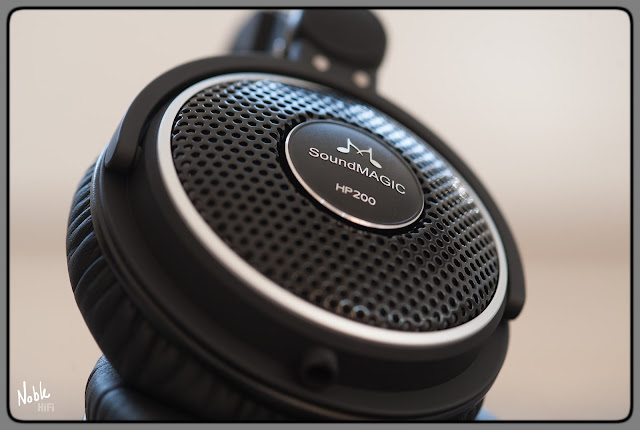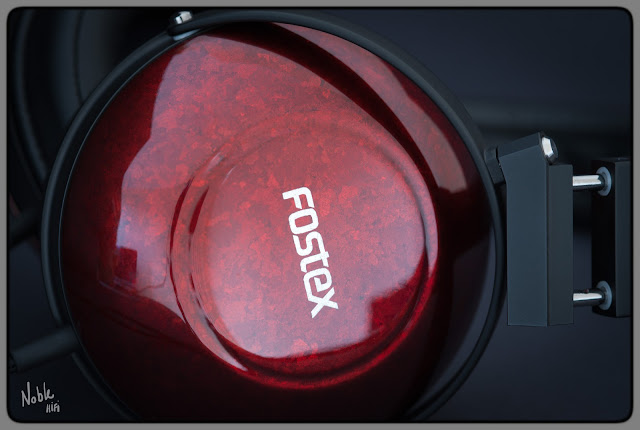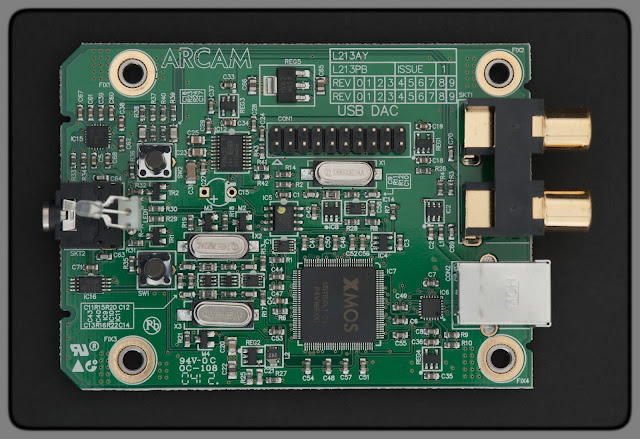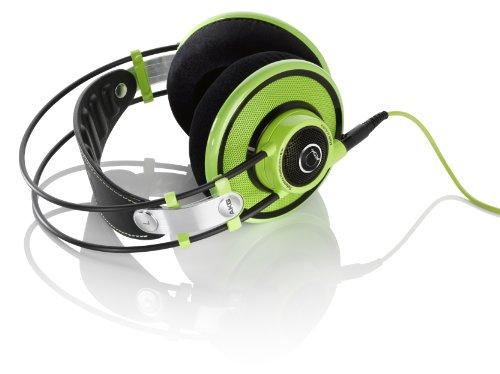Here is my review of the Ifi iDAC - originally posted on my Blog - http://noblehifi.blogspot.co.uk/
The iDAC is a combined DAC and headphone amplifier. The ESS 9023 Sabre DAC and class 2 Asynchronous USB is capable of decoding audio up to 24bit 192khz. Being over the magic 96khz it requires a driver to function on a Windows PC, but it will work out of the box on an OS-X Mac or Linux system. It shares the same aluminium chassis, shape and styling as the rest of Ifi's 'Micro' range and weighs in at 193g. The back-plate houses only the full-size USB-B connector, so the RCA connectors are up front with the volume and 3.5mm headphone jack. There is no power input or switch since the unit takes it's juice from the 5v USB bus (whenever it's connected to a USB port that's supplying power the iDAC will be on).
SOUND
I was really happy with the sound quality from the iDAC. It's a huge step up on any computer's default audio and it competes well with other similarly priced units. The amplification is also very good for a unit of this size / price. It doesn't quite live up to the levels of the dedicated & powered iCAN (which is understandable), but of course you can use them together if you so wish.
The iDAC alone has a sound that's very clean, smooth and detailed. Neutrality is quite a stong point for the iDAC because it seems to suit a wide range of headphones equally well. Bass feels tight and kicks hard, without feeling bloated. Mid-range feels smooth and detailed. While treble is exciting and articulate, without any sensation of harshness. Soundstage is also really good, feeling enjoyably wide / dynamic and giving open headphones an impressively spacial feeling.
I had no issues dealing with bit-perfect audio at any settings. Unlike some USB DACs that insist on certain sample rates or bit-depths; like the Fostex HP-A3 or Arcam r-PAC respectively. I was able to dynamically shift between different audio format and system setting without much pause or any need to restart software (Foobar), so it seems the drivers are indeed pretty solid on the Windows platform.
Power wise there is plenty on tap here for all be the very hardest to drive headphones, while sensitive headphones don't suffer from gain distortion or fiddly volume settings.
HEADPHONES
I have tested quite a few headphones with the iDAC straight out of my laptop and I am very impressed by it's abilities. Most recently I have been playing with the Hifiman HE-500s and I have been very impressed with that combo indeed. I wish I could plug them straight in, without needing an adapter, but oh well. The sound was deep, energetic and smooth. A very nice match for the HE-500's sound.
The Mad Dog is another Planar Magnetic headphone that's a good test of amplification and this also had no issues getting enough juice out of the iDAC. Now this is a headphone is nothing like the HE-500. It doesn't have the crisp kicking bass, nor does it have a midrange that excites in the same way. It's a very flat headphone that can feel a little dry at times, but it's bass is great when you get used to it. This is driven equally well by the iDAC. I was surprised that it needed more power than the HE-500, but 50% was still often enough to split your head open.
Sticking with larger headphones, but moving to dynamic drivers I picked up the Denon AH-D7000 to see how the iDAC deals with it's warmth and wobbly bass. I think it's possibly that the iDAC is tightening up the bass a bit here compared to something like the Schiit Modi and Magni. I usually like amplification adding a bit more upper bass heft, if it's done well, but here I really like how the Denon is handled. It doesn't overemphasize the mids, but it does make it feel a bit faster and better for Rock and Pop than it often does. The smoothness of the amplification also adds nicely to the warmth of the headphones without turning into a mushy mess. All in all I am very happy here, accept again I needed that step-down adapter connection.
The portable Sennheiser Amperior also gave me a lot of enjoyment, despite their overzealous upper bass emphasis the iDAC does wonders to push the quality of this small driver. I really enjoyed this combo for Rock, but also Soundtracks and movie watching because of it's power and speed. These 18 Ohm headphones are driven to high volumes on the iDAC with less than 1/4 turn on the dial, but the potentiometer is so nice and smooth that precise power is still not an issue.
COMPETITION
There are quite a few devices around for the iDAC to fight with. From all the things that I have tested recently the Fostex HP-A3 is probably the closest match. The iDAC doesn't have the optical input or output that the HP-A3 does, but I don't see this as a big loss, actually since I never use optical it's a plus for me because the iDAC can concentrate on it's USB. Both machines are only powered by the 5v USB bus, but considering this they both produce a very refined sound and can even drive demanding headphones to loud volumes easily. I do prefer the larger headphone connection and rear RCA connectors of the Fostex, but then I prefer the slimmer chassis and smooth metal volume control of the Ifi, so there's no clear winner on design and build for me.
Purely talking audio quality I would give the nod to the iDAC because it feels a little more capable in the bass department, although both of these machines are more about detail than warmth the iDAC feels a little warmer at not much expense in the hard edged detail department. It feels like a nicer balance for a majority of my headphones and that's quite something since the HP-A3 is very good also.
AUDIO FORMATS
I should point out that I don't have a lot of high-definition audio to test the benefits of 192khz sound. I have one album in this standard and less than a dozen in the 96khz format. Most of my music is either in lossless CD or maximum quality compressed CD (Spotify premium) format. The iDAC did a great job with all of this and had no technical issues whatsoever. I'm not one to shout about the benefits of HD audio quality though, as I'm not convinced that I can sense it. On the flip side; I am pleased to see the iDAC support 192khz audio, even if it does mean I have to download a driver to make it work.
Trying to connect the iDAC to my android phone (Samsung Galaxy Note 2) proved unsuccessful. Normally I would put this down to the iDAC needing the full 5v that a computer can provide and the phone cannot, but this time I cheated and used Ifi's Gemini cable to provide the power and still I could not get the Note 2 to drive act as a digital transport for the iDAC. I know this works because it was successful using the Gemini the same way with the Schiit Modi. This is a rather unlikely combination to use, but just to let you - it doesn't work. Now Samsung uses it's own digital audio format on the Galaxy phones, so I'm not too sure what the issue is here.
BUILD
The basic design of the Ifi chassis' are the basic tube - with two plates screwed on, but they're made from nice aluminium, which deals with heat well and they feel like solid quality. Their design is just different enough to keep things interesting. They also stack quite well, although in the case of the iDAC you could feel like it doesn't need to be combined with any of it's brothers, I can tell you that it's certainly not a bad idea. The iDAC follows the same design as it's family tree, but it's the only model that doesn't require a power connection so all you get on the back is USB - B port. This gives the iDAC all the power (5v) and data that it needs.
The analog RCA outputs are placed on the front of the unit, which is a little odd. When I used the iDAC for speakers I just turned it around and lived with the USB being untidy. Since the volume control wasn't required any more this wasn't too bad, although ideally I would have preferred them on the back to keep things neater in general, but it's not the end of the world.
The headphone connection is the smaller type (3.5mm / 1/8"), which is OK, but on anything costing this much I usually prefer to see the larger (6.35mm / 1/4") connection. I experienced some crackling in the audio when I moved the connection while using adapters for larger headphones. This happened with simple adapters and cable adapters that work fine with other equipment so I can only put this down to the connection, but it didn't seem to happen hardly ever while using headphones with the smaller connector. In general use this issue didn't really bother me, but it was easy to repeat if I fiddle with the connection.
The metal volume dial is as smooth on the outside as it is to turn. The mechanism is nice and tight too, which makes it easy to get just the right volume - even with very sensitive headphones (less than 25 Ohms). I don't get on with in-ears so I can't contest that the sensitivity is quite enough to cope with them, but it certainly seems like it could be fine.
FINAL WORDS
The iDAC is a great little machine than can be driven from a small laptop (or even a Windows tablet), its high quality amplification can easily drive demanding headphones to loud volumes too. You'd be hard pressed to beat this thing for the money and if you want to improve the sound further later on there are plenty of options in the Ifi catalog that work with it well.
I like how it's not over complicated with other inputs and outputs, although I do wish the RCAs were on the back and the headphone connection was the larger type, but if none of these details bother you then I highly recommend it.
EQUIPMENT USED
Custom Desktop PC, Dell Vosto Laptop, Ifi iUSB, Ifi Gemini, Ifi iCAN, Schiit Magni, Schiit PYST, Epiphany Acoustics Atratus, Denon AH-D7000, Hifiman HE-500, SoundMAGIC HP200, WeSC Chambers RZA Premium, Mr. Speakers Mad Dog, Sennheiser Amperior, Samsung Galaxy Note 2















 . I really like Ifi products. I will be writing a review for the iUSB and Gemini soon ^^
. I really like Ifi products. I will be writing a review for the iUSB and Gemini soon ^^



























































































